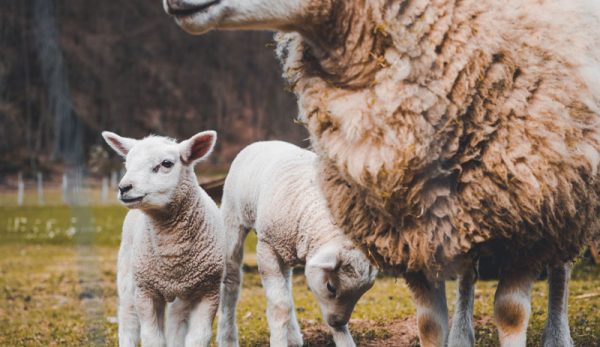
OK, full disclosure: I don’t lamb in the winter, so I don’t have to worry about hypothermia during lambing. My lambs will hopefully come along in April or early May. However, many of my friends with sheep do lamb in the winter. My Facebook page and text messages are filling up with lamb pictures!
I did start to wonder how the winter lambs fared, especially in places where the temperatures drop to the low teens or single digits on a regular basis.
To find out more, I talked to Denice Rackley, a sheep producer in Indiana. Denice has raised sheep for nearly 20 years and has a flock of 80-plus North Country Cheviots.
Denice said she used to lamb in the winter, but switched to spring lambing as it was easier on her to have the ewes give birth out on pasture, as opposed to inside a barn. It really depends on your setup, she added.
Another reason people might have lambs in the early months of the year can be a seasonal market for lamb from restaurants. And others might want lamb for holiday festivities throughout the winter, too.
Read more: What do you need for lambing season? Here’s an overview of what you should have on hand.
Hypothermia during lambing is the leading cause of death in lambs.
But if you do decide to pursue lambing in colder months, Denice warns that hypothermia (low body temperature) during lambing is the leading cause of death in newborn lambs. Originally, I had thought that simply making sure the lambs were in a warm, draft-free place was all you had to do. That is important, of course.
But there are many things sheep owners can do to prevent their lambs from becoming hypothermic even before birth.
First, the condition of a ewe and her nutrition are important throughout the pregnancy. This is even more so the case in the last six weeks before giving birth. Ewes that are too thin or very old may have trouble during this time, when udders develop and colostrum production begins.
Denice also points out that fetal health can be affected to a great degree during the last six weeks of gestation if the ewe does not receive adequate nutrition. It’s during this period that brown fat is deposited around the fetus’s heart and kidneys. This brown fat sustains the lamb through the first hours of its life!
Lambs that are premature, or lambs that are born to older or very thin ewes, often don’t get this protection.
Of course, having the right environmental conditions is important as well. For winter lambs, it’s vital to have an indoor area dry and free from lots of drafts. Even if you engage in late winter/early spring lambing, you should make sure the ground temperature is somewhere around 45 degrees F if you rely on the ewes to give birth outside.
Read more: Are your pregnant ewes ready for lambing? Here’s a checklist for staying prepared.
Learn to recognize the signs of hypothermia.
It’s important to know the signs of hypothermia in lambs before it progresses very far.
The first sign you may see: a lamb lying for long periods on its side, head down.
Young lambs may lie like that if they are out in the sun. But for the most part they will have their head up. You will need to go nudge it with your hand or foot and see if it will get up. A healthy lamb will stand up and stretch, then go find its mother to nurse a bit.
If your lamb does that, they are probably just fine. If not, you may need to do a bit more.
One thing you can and should do immediately is take the lamb’s temperature. A normal temperature for a lamb is about 102 degrees F. If it’s at 100 degrees F or less, your lamb is most likely suffering from hypothermia.
When lambing, keep watch for other possible signs of hypothermia, too, including:
- weakness
- an inability to get up
- crying excessively
I recommend that, before you encounter this during your lambing, read up on how to treat hypothermia. And if it happens in your flock, call your vet.
Being able to recognize the signs of hypothermia in your lambs very quickly could mean the difference between life and death. If you are lambing in the next few months, I wish you the best of luck. I’ll definitely report back on my own experience later in the spring.




